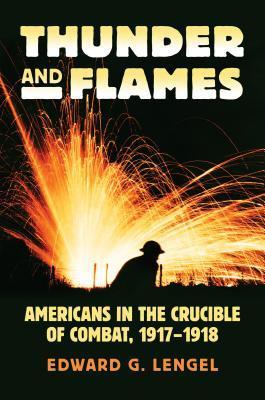What do you think?
Rate this book


457 pages, Hardcover
First published March 6, 2015
We did not drive the Boche back; we killed him by the thousands and those that we did not kill we took prisoners. We killed them before they crossed the river; we killed them in the river and we killed them on the south bank as fast as the machine guns and rifles could pump lead into them. (237)
We groped forward through the roaring, flashing thunder. Men stumbled over each other in the trench bottoms. The darkness was now violet and now splotched with green, yellow, and red flames of fire. Gravel rained on our helmets, trees fell, we choked in swirls of dust. We tripped over a figure, whose piercing screams sounded muffled in the terrifying din. Now shadowy, now vivid forms forms huddled against the walls of the fire trench… Flashing detonations filled the woods, the whine of shells half-obscured by the thundering noise. We staggered through stretches of trench and crawled around a series of erupting bayous. (221-2)
[A]n old Frenchman (he looked at least 50) in a tattered blue uniform was walking slowly down the road carrying on his back, toward the dressing station, a wounded American Doughboy. Every time I have felt annoyed since then at France, this picture comes to my mind and my anger softens. (277)